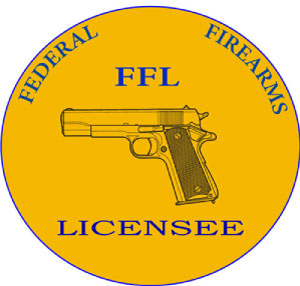Were Firearms Regulated In British North America?
The precedents established by the English with respect to the regulation of firearms would become the basis for legislation implemented in the legislatures of colonial North America. Colonial legislatures implemented codes regulating the ownership, repair, transfer and storage of firearms. According Robert Churchill, his survey of the “printed session laws” of the thirteen colonies “pertaining to gun regulation”, verified assertions made by other scholars in that “hundreds of individual statutes regulated the possession and use of guns in colonial and early national America”.[1]
It should be made clear that colonial orders respecting weapons, and specifically firearms, referred principally to the places and times in which persons who could possess firearms were either required to do so or permitted to do so. Statutes pertaining to prohibited possession by certain persons, or prohibited transfers to certain persons were usually related to the person’s race, ethnicity, religion, or indentured status.
Regulation of firearms in British North America was a necessary function of the “state” chiefly as a mode of survival. In 1619, Virginia passed a law criminalizing the transfer of firearms to “Indians” for example. The colonists were seeking to protect themselves from violent confrontations with “Indians”, and therefore passed laws forbidding the transfer of firearms to the native population.
In this particular example, the 1619 convention of the Virginia House Of Burgesses passed an ordinance indicating the following:
“That no man do fell or give any Indians any piece ƒhott, or
poulder or any other armes offenfive or deffenfive upon paine
of being held a Traytor to the Colony, & of being hanged…”[2]
Giving weapons to the native population was a very serious offence, and the penalty of death by hanging speaks to the colonists fear, and knowledge that weapons possessed by “Indians” would likely be used against the colonists.
[magicactionbox id=2965]
Did Colonial Governments Require Persons To Possess Firearms?
The development and maintenance of militias within the several colonies also prompted legislation affecting firearms. Although it has been argued that the pattern and nature of firearm regulation in British North America was fundamentally different that it had been in England, there appear to be some practical similarities. In either instance, the governmental body in power at the time implemented laws compelling or prohibiting the possession or use of firearms under certain conditions.
For example, the Virginia (1619) ordinance referenced above issues a mandate for persons to produce their arms at a particular place and time.
“All perfons whatfoever upon the Saboath days fhall frequent
divine fervice and fermons both forenoon and afternoone; and
fhal bring their peices, Swordes, poulder, and fhott”[3]
Professor Churchill points out that in colonial New Jersey for example, the law ordered the provision of “arms and ammunition” to militiamen, and imposed a fine if the militiaman was deficient in keeping said arms. Similar laws applied in South Carolina and Georgia as well.[4]
Massachusetts Bay Colony passed a number or statues with respect to “armes” and related items; powder, bullets, bandoleers, etc. The law required persons to keep arms and report for training as required. The law provided for the distribution of arms to some who could not afford to purchase them. There were requirements for officers to examine arms, and fine those persons to be deficient in the required possession of arms or maintenance of arms.
Who Could Not Possess Firearms?
Not all persons could possess firearms in British North America. There were no apparent prohibitions for free white men with respect to ownership of arms. However, in Massachusetts for example, firearms ownership and use was prohibited for “Negroes” and “Indians”. They could not possess arms or train with the militia.
Below is an example of a statute forbidding the use of arms by “Negroes” and “Indians”[5]
In 1656, the Colony of Massachussetts Bay “General Court” ordered:
“…henceforth no negroes or Indians, although servants to
the English, shall be armed or pmitted to trayne…”
This order was imposed within the context of regulating “…military companyes within this jurisdiction…”[6]
Records of Governor and Company of The Massachusetts Bay in New England
The following orders can be found in the records of the Massachusetts Colony 1644 – 1657. These brief excerpts are likely indicative of other English colonial statutes in effect at the time.
The elected and trusted leaders of the Massachusetts Colony believed it was wise to formally train young men in the use of arms.
“Whereas it is conceaved that ye trayning vp of youth to ye arte
and practize of armes will be of great vse to this countrye…itt is
therefore ordered, yt all youth within this jurrisdiccion, from tenne
yeeres old to ye age of 16 yeeres, shall be instructed…in ye excersise
of armes, as smale gunnes, half pikes, bowes and arrowes…”[7]
Accounting For Firearms
An accounting to be submitted to the “general suveyor” of what arms the respective towns were charged with was also required by law.
Itt is ordered, yt all such as received any coppyyes of notes deliured
in by the generall srveyor, of wt armes their tounes stands charged
wth, should send ye same, or trew coppyes thoreof, to ye said srveryor…”[8]
How Did Massachussetts Ensure That Persons Required To Possess Firearms Complied With The Law?
In the case of Massachusetts Bay, it wasn’t always apparent that persons required to perform duty bearing their arms would muster timely, or have their weapons accounted for and in proper order. The Massachusetts “Court therefore ordered…the chief officers of each company…” to meet at an appointed place twice yearly. The conferring officers were required to bring with them “rowels” that include the names of those who were deficient in their “…armes, ammunition, appearances…“. Persons found to be deficient in the requirements could be fined.
The Court observed “…many defects in making appearance in fitt armes for service & otherwise…”; and required officers twice yearly
“veiwe all ye armes & ammunition of ye band, to see if they be all according to lawe…”
The officers were required to inspect the firearms, verify their fitness for use, including accounting for bullets, powder and other required equipment. The order further empowers the “clarke” to “veiw eury ones armes” if there is any doubt as to whether a person required to possess “armes” is in compliance with the law.[9]
The ordinance continues along these lines, requiring “…all inhabitants, seamen a well as others, are to have armes in their howses fitt for service”.[10]
[1] Robert H. Churchill: Gun Regulation, the Police Power, and The Right to Keep Arms in Early America: The Legal Context of The Second Amendment; Law and History Review, Vol. 25, No. 1 (Spring, 2007), pp. 143
[2] Journals of the House of burgesses of Virginia, 1619-1776; Richmond, VA. : Colonial press, E Waddey co., 1905-15, pp.13
[3] Ibid, 14
[4] Churchill, 148. Professor Churchill quotes the primary source in his work as “arms and ammunition”. This author has not examined the primary source and relies on Dr. Churchill’s essay as quoting the original source correctly. Primary source quoted: “A Supplemental Act to the Act entituled, an Act for better settling and regulating the Militia of this Colony of New Jersey, ” 1757, Bush, Laws of the Royal Colony, 3:503;” An Act for the better regulating the Militia of this Province, ” 1747, McCord, Statutes at Large, 9:645; “An Act for Better Ordering the Militia of this Province,” 1765, Georgia Session Laws.
[5] See generally the work of Clayton E. Cramer on colonial gun regulation and the racist origins of gun control. Mr. Cramer’s books, publications, and website contain numerous references (primary) to colonial statues that prohibited the possession by or sale of firearms to “negroes”, “mullatoes” “Indians”, “slaves” and “indentured servants”. Not all statues include every category by name. However, examination of the citied sources and other important secondary literature reveals no prohibitions to firearm ownership for “free white men” in colonial North America.
[6] Massachusetts, and Nathaniel Bradstreet Shurtleff. 1853. Records of the governor and company of the Massachusetts Bay in New England. Printed by order of the legislature. Boston: W. White, printer to the commonwealth; pp. 397
[7] Massachusetts, and Nathaniel Bradstreet Shurtleff. 1853, pp. 12
[8] Ibid, 14
[9] Ibid, 34
[10] Ibid



